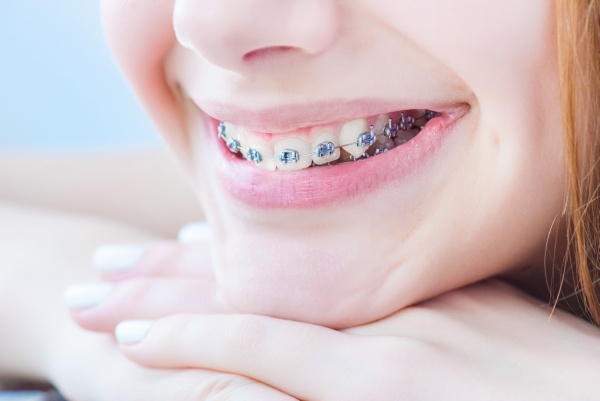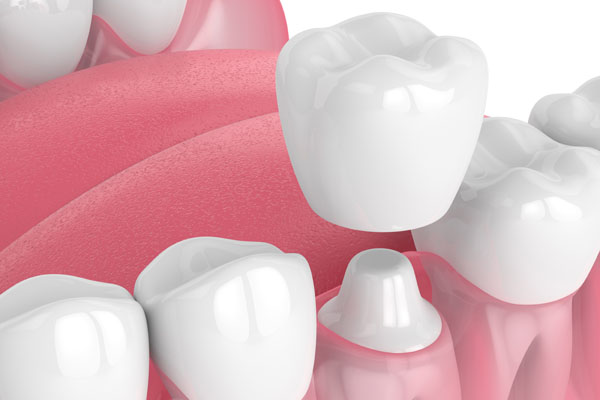What are the Benefits of Orthodontics?

Do you want to understand the benefits that orthodontics can offer to dental patients? One of the more common types of orthodontic treatment includes getting braces to straighten one’s teeth. Straight teeth not only support a healthy mouth, but they also make for a great looking smile. Your teeth should last you your entire life, and with proper care, you can expect to keep all of your natural teeth, which is always preferred. Whenever you happen to be experiencing problems with your teeth, even if they are minimal, looking into your orthodontic options is recommended.
The goal of orthodontic treatment
Wondering what the goal is with using orthodontics? According to the American Association of Orthodontists, the purpose of orthodontic treatment is to create a beautiful smile and a good bite. When choosing to see a general dentist for orthodontic treatment, know that the result is to have a healthy bite that still allows for a smile one can be proud to show off. Some of the more common reasons why dental patients are looking into their orthodontic options are because they are experiencing difficulty when chewing their food, they are experiencing pain or discomfort when biting down, because their teeth are very crooked and because they breathe through their mouth often.
Benefits of orthodontics
The following is a list of some of the more popular benefits that come with choosing orthodontics for tooth repair.
To ensure a proper bite
A misaligned bite can lead to someone experiencing a number of dental problems, i.e. chewing problems, crowded teeth problems, overall jaw pain. A proper bite means that there is less strain being placed on the jaws and muscles, lessening one’s chances of being diagnosed with a jaw-related disorder.
To straighten teeth
Straight teeth support a healthy mouth. It is easier to clean teeth when they are straight, which means a lesser chance of being diagnosed with cavities or gum disease. Today, there are quite a few options out there for straightening teeth, which means that patients have choices.
To restore self-confidence
One of the goals of orthodontic treatment is to restore one’s smile, which means that once their treatment plan is completed, patients can expect to experience a high degree of self-confidence due to their new and improved smile. Since orthodontic treatment is also used to correct some speech impediments, dental patients who are living with speech problems can use orthodontics to restore their self-confidence.
What happens if orthodontic problems are ignored?
Ignoring orthodontic problems does not make them go away and instead, they will only continue to worsen until treated. Some potential issues that patients can experience when they do not address orthodontic problems as soon as possible include abnormal wear on the teeth, chewing problems, digestion problems and speech impediments. Long-term problems can lead to a TMJ or TMD diagnosis, which creates ongoing pain in a patients face and neck area.
Are you currently in need of orthodontic treatment?
Now that you understand the many benefits of using orthodontics, are you ready to make a consultation appointment for more information? Every dental patient who is experiencing problems with their teeth needs individualized attention, as no two dental patients are the same. When you call us to schedule a consultation appointment, know that you will receive the care you need so that your mouth can once again be healthy. We will create a personalized treatment plan just for you, which can take just a few months or many months to complete. Ready to get started?
Request an appointment here: https://gkdentaloffice.com or call GK Dental PC at (617) 826-6075 for an appointment in our Everett office.
Check out what others are saying about our dental services on Yelp: Orthodontics.
Recent Posts
Dental restorations have been used for thousands of years. In fact, a 2012 article published by The New York Times details the discovery of a 6,500-year-old human jawbone. Considered the earliest evidence of dental fillings, it had beeswax in one tooth, which researchers believe was to ease the pain of a crack. These days, restorations…
Crowns are commonly used in dental restorations. A crown is a cap shaped like a tooth but hollow in the middle. It fits over a natural tooth that has to be prepared first. Depending on the issue it is correcting, a crown can be used by itself or as a component of another restoration technique.Teeth…
Regular dental checkups are vital to keeping your teeth and gums healthy. You should visit your family dentist at least once every six months. This includes both adults and children alike. Routine dental appointments are essential for good oral health and they offer many important benefits.Tartar removal is an important step in dental appointments that…
Restorative dentistry refers to any type of dental procedure that a dentist performs to restore a damaged or missing tooth. Dental restorations can encompass several procedures that vary in terms of invasiveness, complexity, and what they can accomplish. However, the overreaching goal of all restorative procedures is to improve the health, function, and appearance of…


